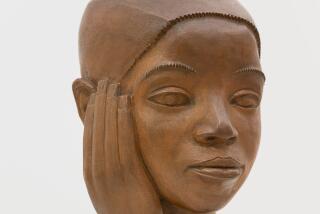Creative views of the great outdoors
GEORGETOWN, Ohio — As a child growing up in Cincinnati in the 1930s, John Ruthven would sit on the banks of the Ohio River sketching wildlife and imagining journeys with famed naturalist John James Audubon.
Today, the 80-year-old artist is a National Medal of Arts recipient.
“It was the crowning moment for what I have tried to accomplish with my work,” Ruthven says of the honor he received in November from President Bush.
Ruthven, often called by peers and fans a “20th century Audubon,” began his career illustrating containers of Play-Doh.
His Redhead Ducks painting, selected as the 1960 winner of the federal Duck Stamp competition, started a wildlife art career that has earned the respect of fellow artists and world leaders. His work has been exhibited in galleries from the Cincinnati Museum of Natural History to the Smithsonian Institution’s Conservation and Research Center.
Besides the White House, his work has been displayed in the Hermitage Museum in Russia and the President’s Palace in the Philippines.
Ruthven has created paintings for foreign heads of state, the U.S. government and major corporations. His studio in the 19th century farmhouse he shares with his wife, Judy, in this rural southwest Ohio community features photos of him with three former U.S. presidents who co-signed some of his original paintings.
The artist, who still leads students on nature hikes through the fields and woods of his 150-acre farm, has trekked through jungles, mountains and rain forests in search of rare species and subjects for his art. And he once was even forced to flee rebel guerrillas in a remote area of the Philippines.
“I’ve been so lucky to see so much of the world while doing what I love,” he says, sitting amid paintings and sketches in the studio he maintains above his gallery and office in downtown Georgetown. “But I still want to go to the Poles, especially Antarctica, and I still have a lot of work to do since I’ve only painted about 2,000 of the 8,000 species of birds.”
Ruthven can’t remember a time when he didn’t want to draw and paint wildlife. He also dreamed of seeing as much of the world as possible.
As an 18-year-old sailor aboard a U.S. Navy destroyer in World War II, he visited foreign ports and drew cartoons for shipmates.
“I might have ended up a commercial cartoonist doing wildlife art on the side, if I had just had a more creative mind,” Ruthven says. “I just couldn’t come up with the right words to go with the cartoons.”
Ruthven began a commercial art career upon his return to Cincinnati, drawing the boy that appeared on the first cans of the popular Play-Doh, a children’s modeling compound created in Cincinnati in the 1950s. He earned as much as $50 for his early work. Now, he gets as much as $75,000 for a single painting.
He has frequently promoted conservation and preservation of wildlife and natural resources.
Designated its first artist of the year in 1972 by Ducks Unlimited, Ruthven has contributed paintings for prints that have raised nearly $2 million for the Memphis, Tenn.-based organization’s efforts to protect and preserve wetlands in North America.


